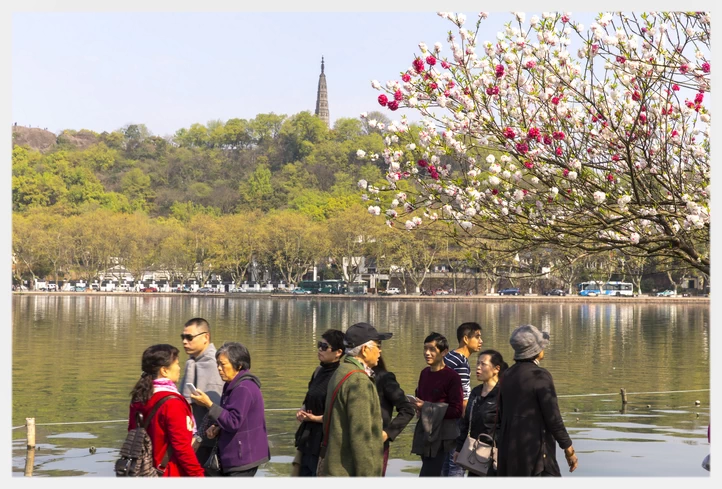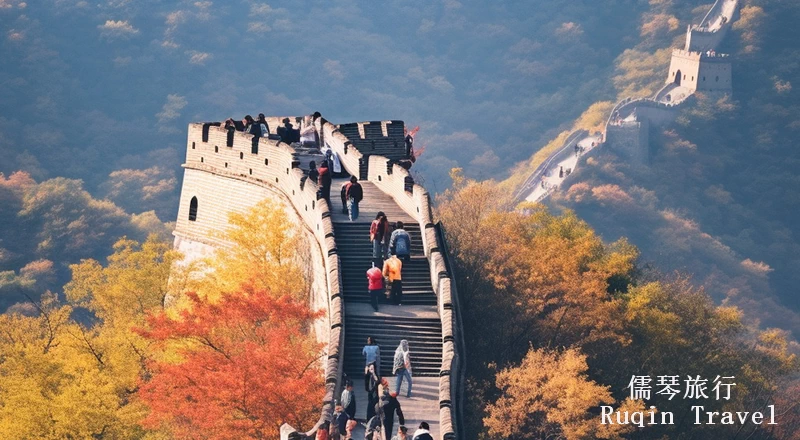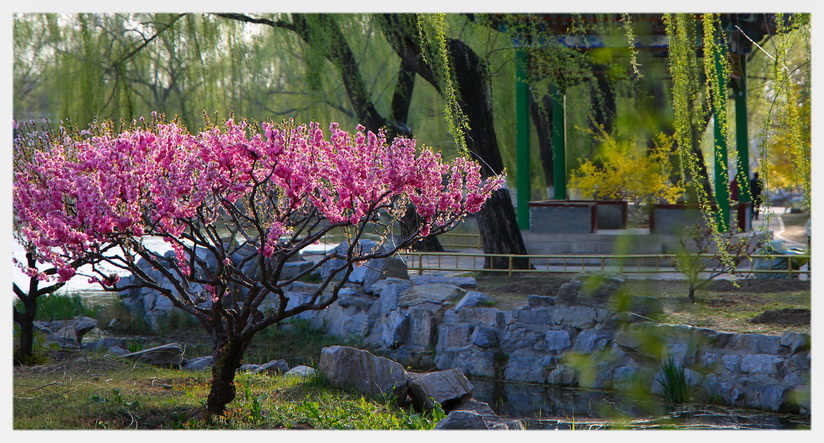In this “The Best and Worst Time to Visit China” guide, we will provide an in-depth look at the ideal months to explore China, highlighting the best and worst times to travel based on weather, events, and tourist influx.
China is a vast country with diverse climates and regions, making it a fascinating travel destination. However, planning your trip around the best and worst times to visit is crucial.
Best Time to Visit China
Spring: March to May
Spring is one of the best times to visit China. The weather during this period is generally mild and pleasant. Flowers bloom, and nature awakens from winter. Cities like Beijing, Shanghai, and Xi’an are particularly beautiful. Moreover, the Great Wall and other outdoor attractions are more enjoyable in the moderate temperatures.

- Weather: Temperatures range from 10°C to 25°C (50°F to 77°F).
- Events: The Qingming Festival in early April is a unique cultural experience.
- Pros: Fewer tourists compared to summer, beautiful landscapes, and comfortable weather.
Autumn: September to November
Autumn is another prime season for visiting China. The weather is cool and dry, with clear skies and vibrant fall foliage. This season offers a great opportunity to explore both urban and rural areas. The Mid-Autumn Festival, celebrated in September or October, is a highlight, with traditional mooncakes and lantern displays.

- Weather: Temperatures range from 15°C to 25°C (59°F to 77°F).
- Events: Mid-Autumn Festival, National Day Golden Week.
- Pros: Perfect weather, stunning natural scenery, and rich cultural festivals.
Winter: December to February
While winter is not typically considered the best time for a China trip, it has its unique charm. Northern cities like Harbin become winter wonderlands. The Harbin Ice Festival is a spectacular event with incredible ice sculptures. Additionally, winter sports enthusiasts can enjoy skiing in regions like Heilongjiang.
- Weather: Temperatures can drop to -20°C (-4°F) in the north but remain mild in the south.
- Events: Harbin Ice Festival, Chinese New Year.
- Pros: Unique winter experiences, fewer tourists, and festive atmosphere.
Best Months to Visit Specific Regions
Best Cities to Visit in China in Summer
Beijing: Summer in Beijing can be hot, but it’s a great time to visit the city’s historical sites. The Forbidden City, Summer Palace, and the Great Wall are must-sees.
Shanghai: Shanghai’s summer is warm and vibrant. Enjoy the Bund, Yu Garden, and the city’s modern skyline. The Shanghai International Film Festival in June is a major event.
Chengdu: Visit Chengdu in summer for a chance to see the famous pandas. The city is also known for its spicy Sichuan cuisine.
Best Time to Travel to the Chinese Countryside
Guilin: The best time to visit Guilin is from April to October. The Li River and the karst mountains are stunning during these months.
Yunnan: For Yunnan, the period from May to October is ideal. The weather is pleasant, and the region’s diverse cultures and landscapes are at their best.
Tibet: The best months to visit Tibet are from May to October. The weather is suitable for exploring the high-altitude region and its unique culture.
The Worse Time to Visit China
Summer: June to August
While summer has its attractions, it is generally not the best time to visit China. The weather can be extremely hot and humid, especially in southern cities. Additionally, the summer months coincide with the peak tourist season, leading to crowded attractions and higher prices.
- Weather: Temperatures can soar above 35°C (95°F).
- Cons: High temperatures, humidity, crowded tourist sites, and higher accommodation costs.
Winter: December to February (in Some Regions)
Winter can be harsh in northern China, with freezing temperatures and heavy snow. This season is not ideal for those unaccustomed to cold weather. However, southern regions like Hong Kong and Guangzhou remain mild.
- Weather: Northern regions can experience temperatures below -20°C (-4°F).
- Cons: Extremely cold weather in the north, limited outdoor activities, and shorter daylight hours.
The worst time to visit China can vary depending on individual preferences and specific factors. However, here are a few factors that could make certain times less favorable for travel:
Chinese National Holidays
Chinese New Year (late January or February) and National Day (October 1st week) are major holidays in China when domestic tourism is at its peak. During these periods, popular tourist destinations can be overcrowded, accommodations may be fully booked, and prices for flights and hotels may be significantly higher.
Extreme Weather Conditions
Some regions in China experience extreme weather conditions that can impact travel. For example, northern regions such as Beijing and Harbin can have freezing cold winters with heavy snowfall, while southern regions such as Guangzhou and Shanghai can have hot and humid summers. Extreme weather conditions may limit outdoor activities or present challenges in transportation.
Air Quality
Air pollution can be a concern in certain parts of China, particularly in heavily industrialized areas like Beijing and surrounding regions, especially during winter. If you have respiratory issues or are particularly sensitive to poor air quality, you may want to avoid visiting during periods of high pollution or monitor the air quality index before planning a trip.
Monsoon Season
Some parts of southern China, such as Guangdong, Guangxi, and Hainan Island, experience a monsoon season during the summer months. Monsoon rains can be frequent and heavy, potentially affecting outdoor activities and sightseeing.
Peak Summer Heat
Summers in many parts of China, particularly in regions like Sichuan and central China, can be hot and humid. If you are not comfortable with high temperatures and humidity, visiting during peak summer months may not be ideal.
In conclusion, the best time to visit China depends on your preferences and planned activities. Spring and autumn are generally the most favorable seasons, offering mild weather, fewer crowds, and stunning natural beauty.
Winter, though challenging in the north, provides unique experiences like the Harbin Ice Festival and Chinese New Year celebrations. Conversely, summer can be hot and crowded, making it the least desirable time for many travelers.
By considering the seasonal variations, regional climates, and major events, you can plan a trip that maximizes your enjoyment and minimizes inconveniences. Whether you’re exploring ancient cities, hiking scenic landscapes, or experiencing local festivals, China offers something for every traveler. Happy travels!
If you have any questions or queries, then please feel free to drop us a line.



